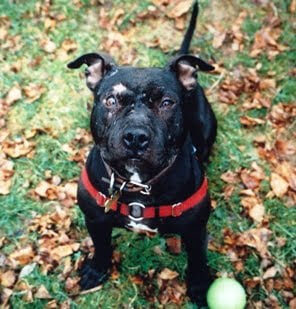 Last week the Washington Humane Society held their 9th annual A Sugar and Champagne Affair to honor their Human Law Enforcement officers. I had a lovely time sipping champagne and snacking on tasty desserts from DC area sommeliers and pastry chefs, while Lilly was treated to gourmet dog biscuits.
Last week the Washington Humane Society held their 9th annual A Sugar and Champagne Affair to honor their Human Law Enforcement officers. I had a lovely time sipping champagne and snacking on tasty desserts from DC area sommeliers and pastry chefs, while Lilly was treated to gourmet dog biscuits. Thursday, January 28, 2010
Sweets, champagne and dogs - does it get any better?
 Last week the Washington Humane Society held their 9th annual A Sugar and Champagne Affair to honor their Human Law Enforcement officers. I had a lovely time sipping champagne and snacking on tasty desserts from DC area sommeliers and pastry chefs, while Lilly was treated to gourmet dog biscuits.
Last week the Washington Humane Society held their 9th annual A Sugar and Champagne Affair to honor their Human Law Enforcement officers. I had a lovely time sipping champagne and snacking on tasty desserts from DC area sommeliers and pastry chefs, while Lilly was treated to gourmet dog biscuits. Kitty Kidneys
 Chronic kidney disease is an all too common finding in middle-aged to senior kitties. Cats are considered seniors once they reach the age of 9 years old. Though we are not yet able to prevent kidney disease, the earlier we detect it, the better chance we have of managing it, which is why we strongly suggest that all senior cats get blood work as part of their regular wellness exams. Clinical signs to look for are decreased appetite, vomiting, weight loss and increased thirst and urination.
Chronic kidney disease is an all too common finding in middle-aged to senior kitties. Cats are considered seniors once they reach the age of 9 years old. Though we are not yet able to prevent kidney disease, the earlier we detect it, the better chance we have of managing it, which is why we strongly suggest that all senior cats get blood work as part of their regular wellness exams. Clinical signs to look for are decreased appetite, vomiting, weight loss and increased thirst and urination.We do not see an increase in kidney values, the BUN and creatinine, until 2/3 of the kidney tissue is damaged. Once the kidneys have reached this state, our goal is to support the kidney function that remains. This is accomplished with a kidney-friendly prescription diet. These diets are designed to contain small amounts of very high-quality protein, thus decreasing the work the kidneys have to do. We suggest feeding canned food, if you don’t do so already, as the increased moisture will also help flush out the kidneys. Starting your cat on an Omega-3 fatty acid such as fish oil has also been shown to help protect the kidneys. I also recommend that owners begin giving the antacid famotidine (Pepcid AC); this helps settle the stomach as increased kidney values can cause nausea. You may also be asked to give your cat fluids under the skin, which help keep kitty hydrated and feeling good.
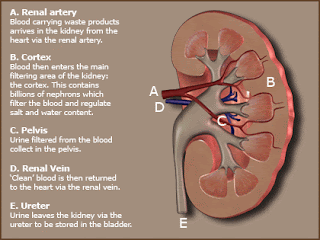
Kidney disease is progressive so, despite our best efforts, it will eventually get worse. That said, the majority of cats respond very well to treatment and live with their disease for many years. The best strategy is to catch it early with routine blood work. This will allow us to do everything possible to give you and your kitty a long, happy life together.
Tuesday, January 26, 2010
Boo's Mast Cell Tumor
 Boo is a 5-year-old Dalmatian mix whose owners came in to have a soft mass on his right front leg evaluated. Eight months previously, they had brought Boo in for his annual exam at another area animal hospital. They had pointed out the mass to the veterinarian at that time and were told that it “felt like a benign fatty tumor” and not to worry about it. Since that first exam, the lump had doubled in size, so they came to Friendship to get a second opinion.
Boo is a 5-year-old Dalmatian mix whose owners came in to have a soft mass on his right front leg evaluated. Eight months previously, they had brought Boo in for his annual exam at another area animal hospital. They had pointed out the mass to the veterinarian at that time and were told that it “felt like a benign fatty tumor” and not to worry about it. Since that first exam, the lump had doubled in size, so they came to Friendship to get a second opinion.A fine needle aspirate is the only way to know for sure whether a suspicious lump is a benign fatty tumor (also called a lipoma), or a malignant growth. It is a simple, virtually painless procedure in which a needle is inserted into the mass so that a few cells can be obtained for examination under the microscope. Boo was very brave as I performed the aspirate. In fact, he didn’t seem to notice I was doing anything!
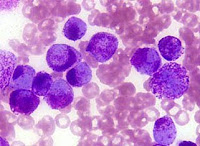 MCTs are the most common type of canine skin cancer, making up about 20% of all skin tumors. They have a wide variety of behavior. Some are easily cured by surgical excision, while others metastasize to lymph nodes, liver or spleen.
MCTs are the most common type of canine skin cancer, making up about 20% of all skin tumors. They have a wide variety of behavior. Some are easily cured by surgical excision, while others metastasize to lymph nodes, liver or spleen.The first step for Boo was to schedule surgery to have the mass removed so we could determine his prognosis and treatment options. MCTs are graded by a pathologist on a scale of 1 to 3, with grade III being the most malignant.
Given the size and location of Boo’s mass, it was going to be challenge to remove all of it, along with the extra tissue required to get what we call “clean margins.” Lesions on an animal’s leg or face are much more difficult to remove as you are limited by the lack of excess skin to work with.

The fact that the tumor had grown so much bigger also decreased the likelihood that we’d be able to remove it completely. If it had been discovered to be an MCT during the first visit at the other animal hospital, surgery could have been performed early on while the tumor was still small and the chances were greater it could be removed completely. But because a fine needle aspiration was not performed, the tumor was not correctly diagnosed and was instead allowed to double in size.
Normally I would have no problem surgically removing an MCT, but given the location of Boo’s mass I referred him to our board-certified surgeon Dr. Walker. Though Dr. Walker removed as much tissue surrounding the mass as possible, he was not confident that he was able to get clean margins. To find this out, we would have to wait for the pathology report.

Boo’s MCT came back as a Grade II with dirty margins, meaning we had not been able to remove all of the tumor cells. The next step was to send Boo to the oncology department for more extensive diagnostics to determine if the cancer cells had spread anywhere else.
Boo was lucky. The MCT had not spread and he was an excellent candidate for a new drug called Palladia, the very first chemotherapy drug approved by the FDA for use in veterinary medicine. I am also proud to report that The Oncology Service at Friendship performed many of the central clinical trials that were use in gaining FDA approval of this medication. Normally veterinarians and veterinary oncologists use human drugs off-label so the release of Palladia is an exciting step in the fight against canine cancer.
The lesson I hope that everyone can learn from Boo’s story is that ALL skin masses should be aspirated, even if they “feel” benign. I am confident that Boo is in the very best hands with our oncology department and currently he is doing very well.

Tuesday, January 19, 2010
What to do about that bad breath
 When your dog gives you kisses do you almost pass out from the stench of her breath?
When your dog gives you kisses do you almost pass out from the stench of her breath?Dental disease is one of the most common disorders diagnosed on wellness exams. It is estimated that 80% of dogs and 70% of cats over the age of 3 year old suffer from some degree of periodontal disease.
While a dental cleaning results in whiter teeth and fresh breath, the main benefit is to your pet’s overall health. Consider this: every time your pet chews bacteria is showered into the bloodstream. This then lodges in the kidneys, liver, lungs and heart causing damage and disease. In addition, open fractures, feline odontoclastic resorptive lesions, tooth root abscesses and worn teeth are painful and can act as a constant source of discomfort for your pet.

Rather than wait for a problem to develop, it is best to perform a dental cleaning when only mild gingivitis and/or tartar are present. This will maintain good dental health and prevent disease before it becomes a problem, which results in saving you money and more importantly keeping your pet as healthy as possible.
I realize a dental cleaning is not only expensive but it can be scary to put your pet under anesthesia. While anesthesia is daunting, at Friendship we do everything we can to make it as safe as possible with aggressive monitoring while your pet is under anesthesia. At Friendship we are convinced that the low risk of anesthetic complications is far outweighed by the benefits of good dental health. After continuously seeing the many complications that can arise from poor dental health I have regular dental cleanings done on all my dogs, the cats don’t need it quite yet. After your dental cleaning we will work with you to keep your pets teeth healthy and prevent tartar buildup. Schedule a dental cleaning and start enjoying those doggie kisses again.
Thursday, January 14, 2010
Nietzsche's battle with arthritis

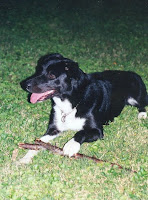
When the laser arrived I immediately thought of Nietzsche and wondered if this could help him. His owner was interested in trying so we started him on a treatment protocol of twice weekly sessions.

The first few sessions were relatively unimpressive. The literature says it can take anywhere from 3 to 20 sessions to notice an improvement a chronic condition like Nietzsche’s. Around the time of sessions 3 and 4, he started to have a hard time. Not because of the laser therapy but his age was catching up with him and he seemed more depressed at home.

After a long talk about quality of life we decided to see how he did at home after session five. He seemed to do a little better so we decided to keep going. Everyone was amazed after Nietzsche’s seventh session when he pranced through the treatment area at the hospital.
I called his owner immediately to report this exciting development. He too had noticed a difference: in fact, on the previous evening, he and Nietzsche had gone on their longest walk in months.
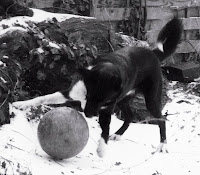
That was a few weeks ago and now Nietzsche’s owner reports that he has better balance, his attitude is back to normal (stubborn and opinionated) and this past weekend he even thought about chasing a squirrel!
Nietzsche is a wonderful dog who has many health issues that commonly affect senior pets. While laser therapy cannot address all his issues, it can keep him comfortable and allow him to enjoy himself. As you can see from these pictures his owner was kind enough to send me he enjoyed a very active lifestyle in his younger days. In addition to being an athlete, he also worked as a therapy dog in an inpatient, psychiatric crisis center
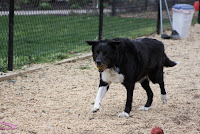
Now that Nietzsche has a break from the chronic joint pain that dominated his life, he is able to focus on things that make him happy – like going on walks with his owner and thinking about squirrels.
Tuesday, January 12, 2010
The wonders of laser therapy!
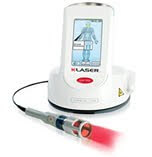
Friendship now has a therapeutic laser to provide our patients a noninvasive, drug-free treatment option for a variety of common medical conditions. This amazing little machine uses specific wavelengths of light to improve healing time, increase circulation, reduce pain, and decrease inflammation.
During each painless treatment, the laser light interacts with tissues at the cellular level to increase metabolic activity within each cell. This initiates a cascade of beneficial effects that increases circulation, drawing water, oxygen, and nutrients to the damaged area. This creates an optimal healing environment that reduces inflammation, swelling, muscle spasms, stiffness, and pain. As the injured area returns to normal, function is restored and pain is relieved.

Tuesday, January 5, 2010
Trooper update!
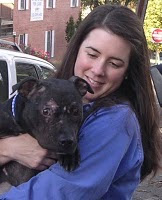 Let us start out the new year on a happy note with an update on Trooper. Four months ago on an October morning Trooper left Friendship which had become her home for the last two months for a rehabilitation center that specializes in victims of dog fighting.
Let us start out the new year on a happy note with an update on Trooper. Four months ago on an October morning Trooper left Friendship which had become her home for the last two months for a rehabilitation center that specializes in victims of dog fighting. 